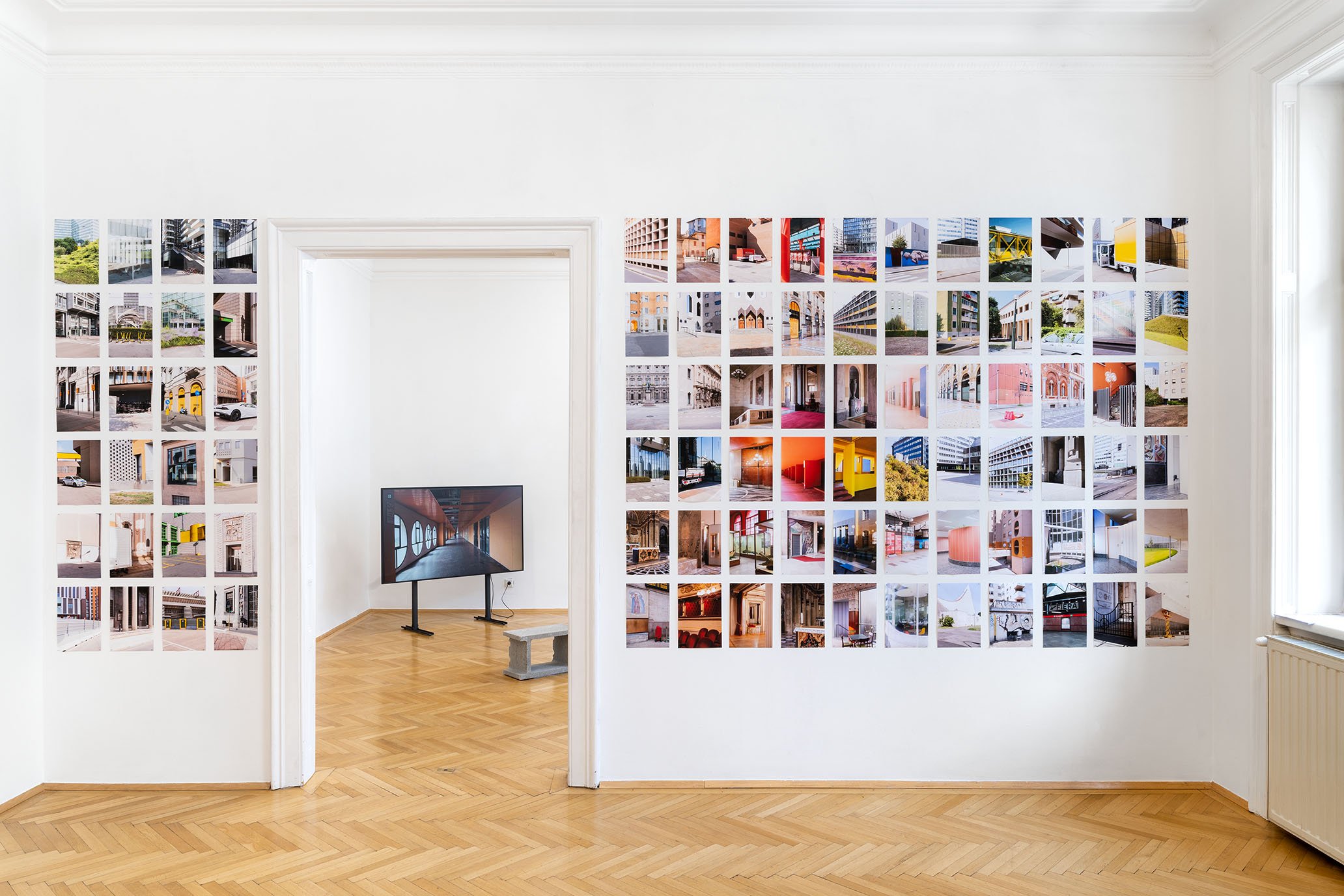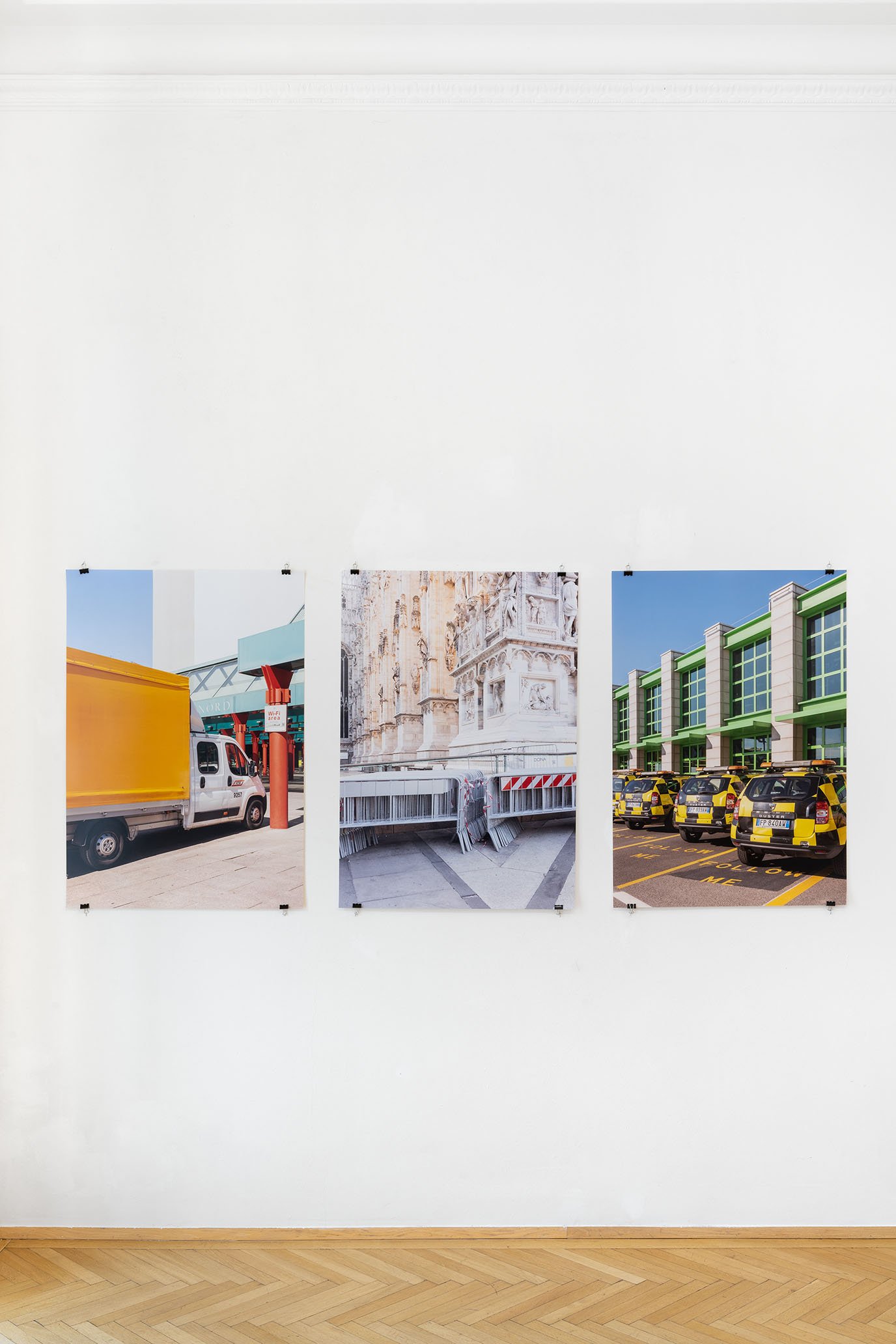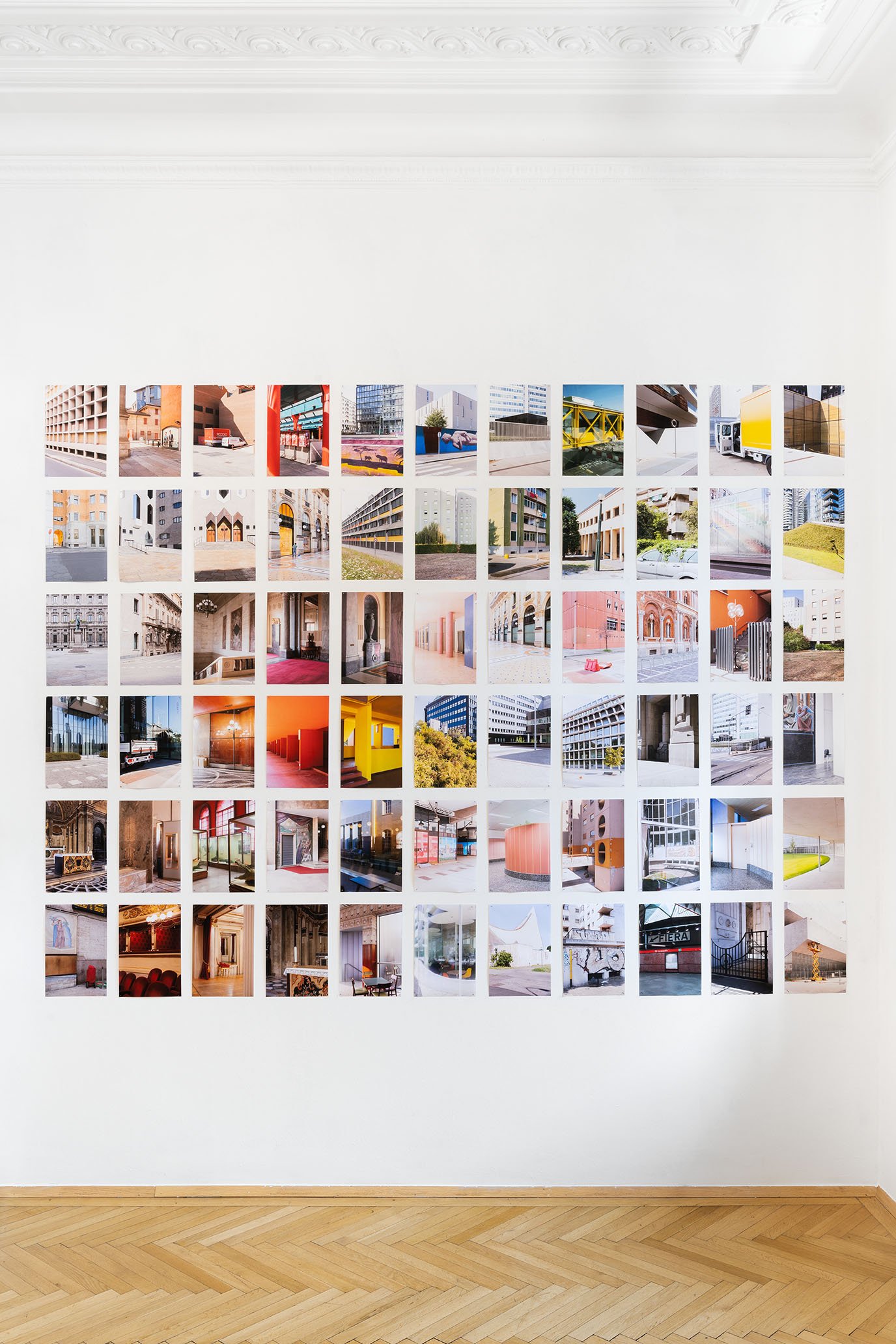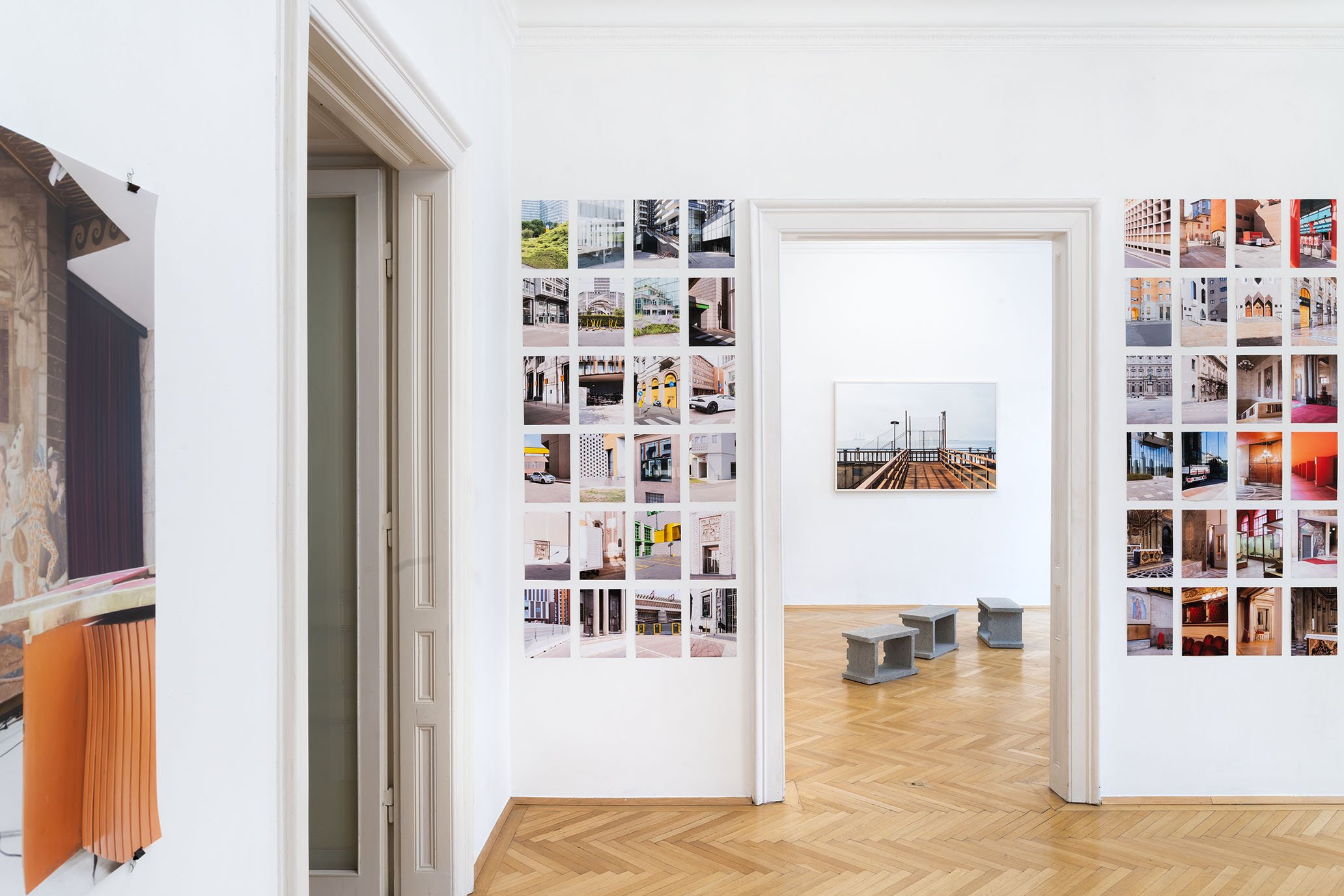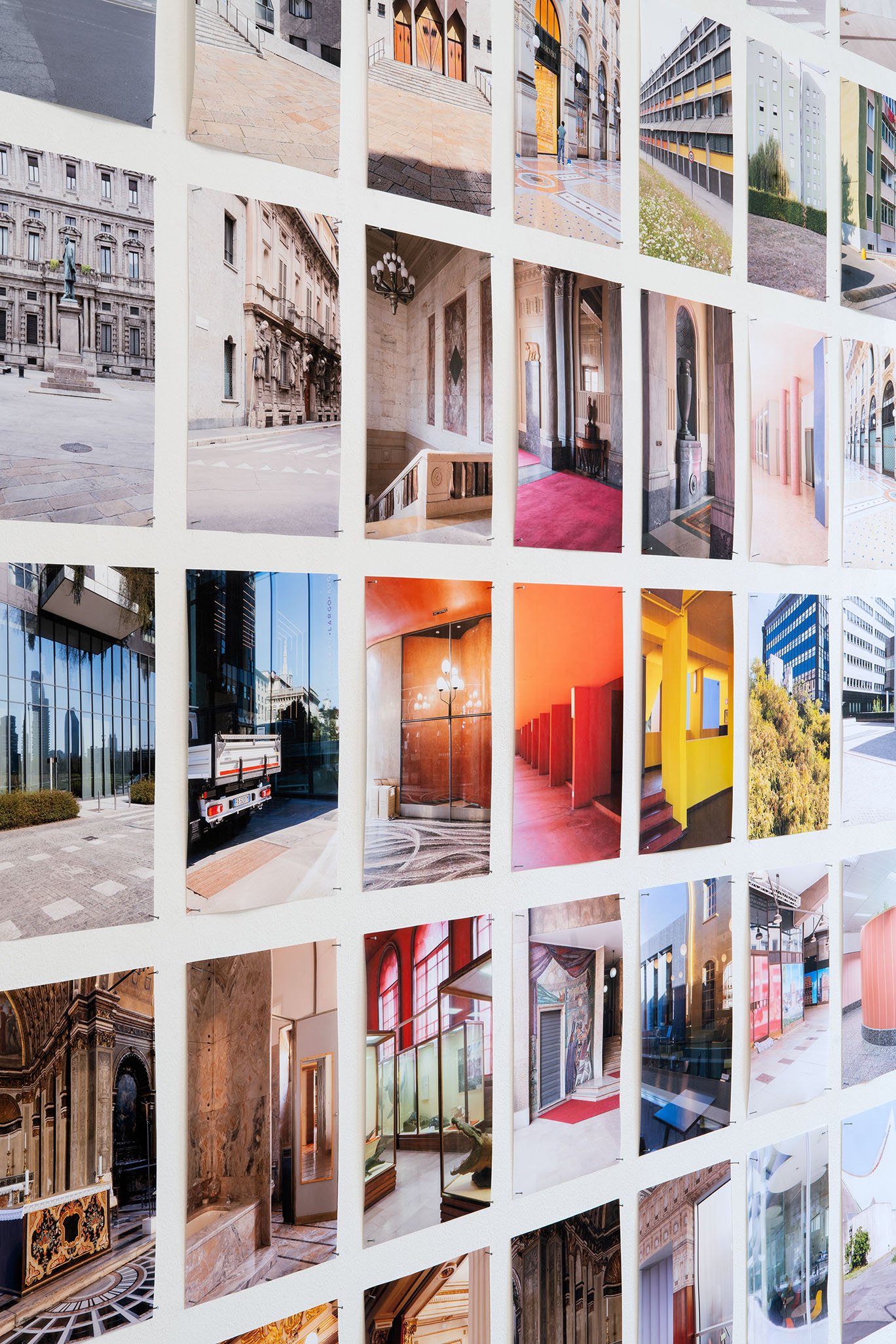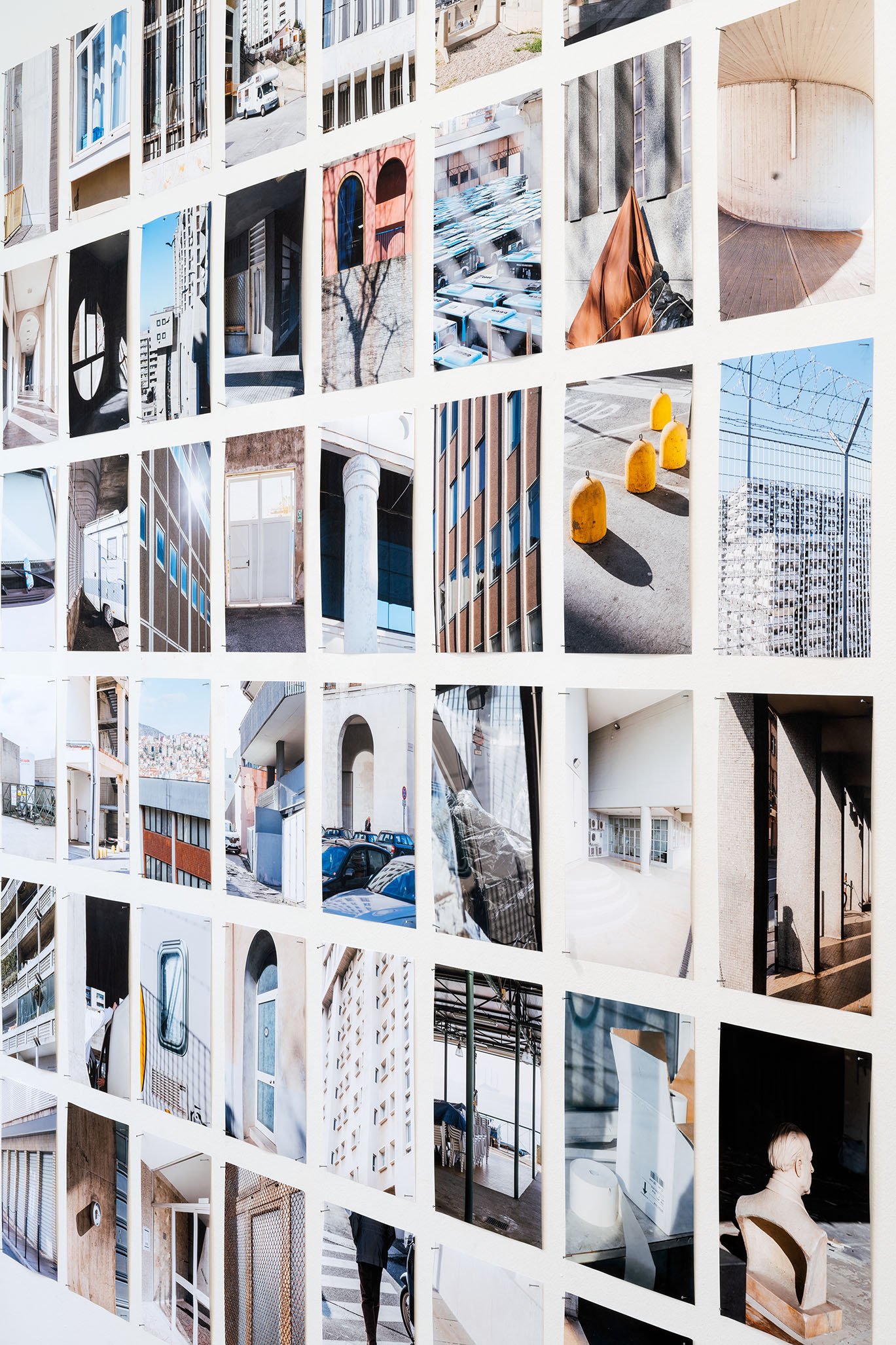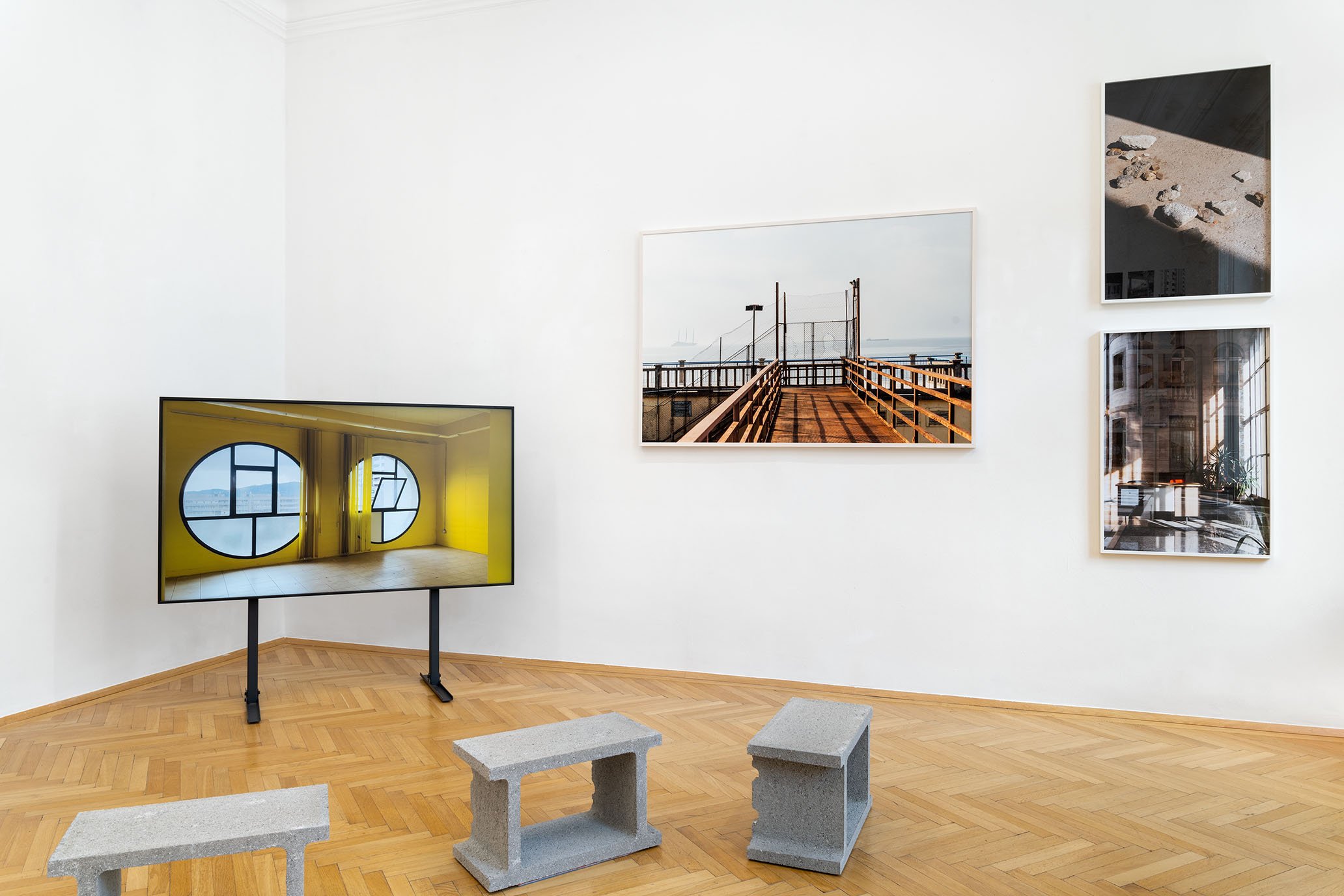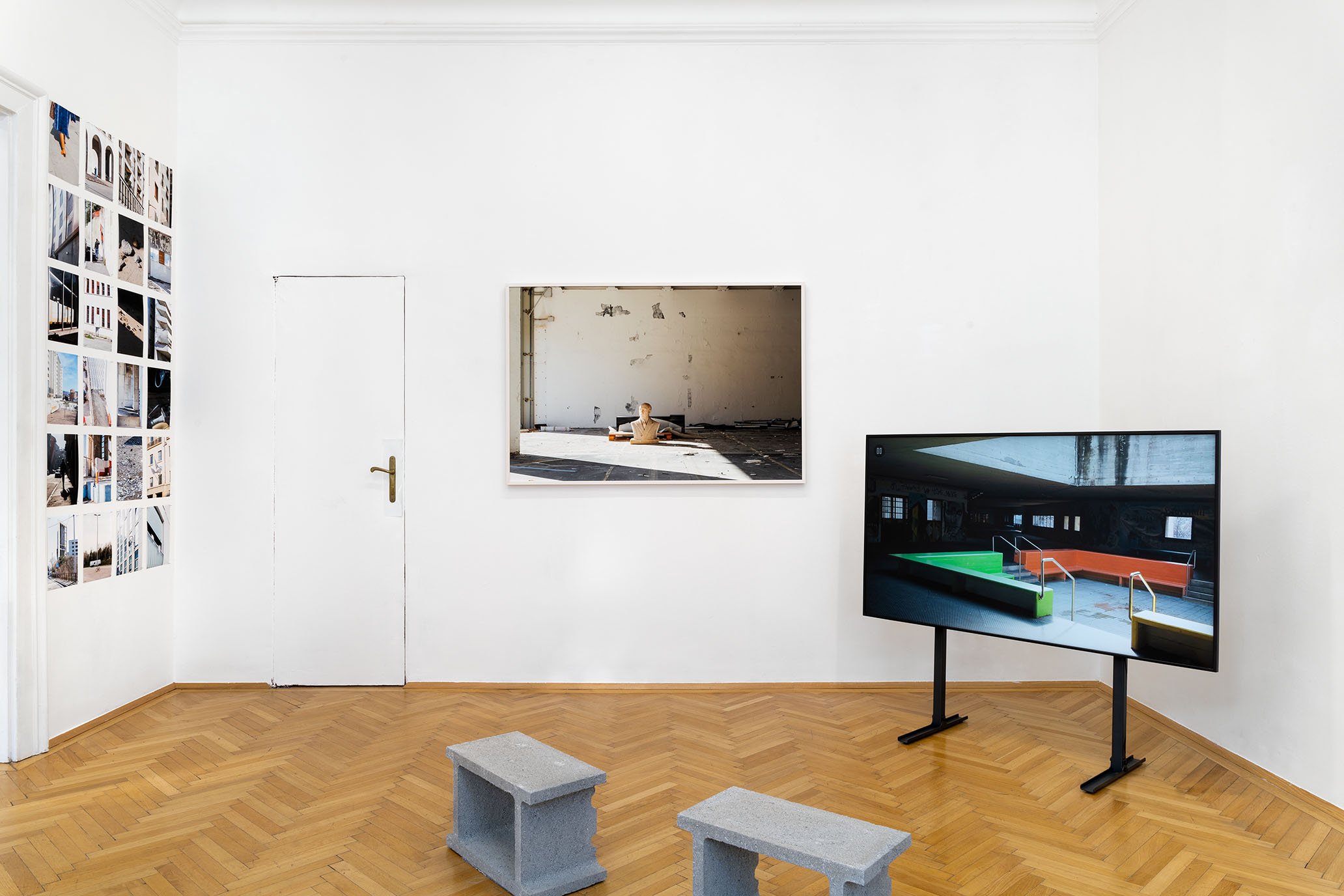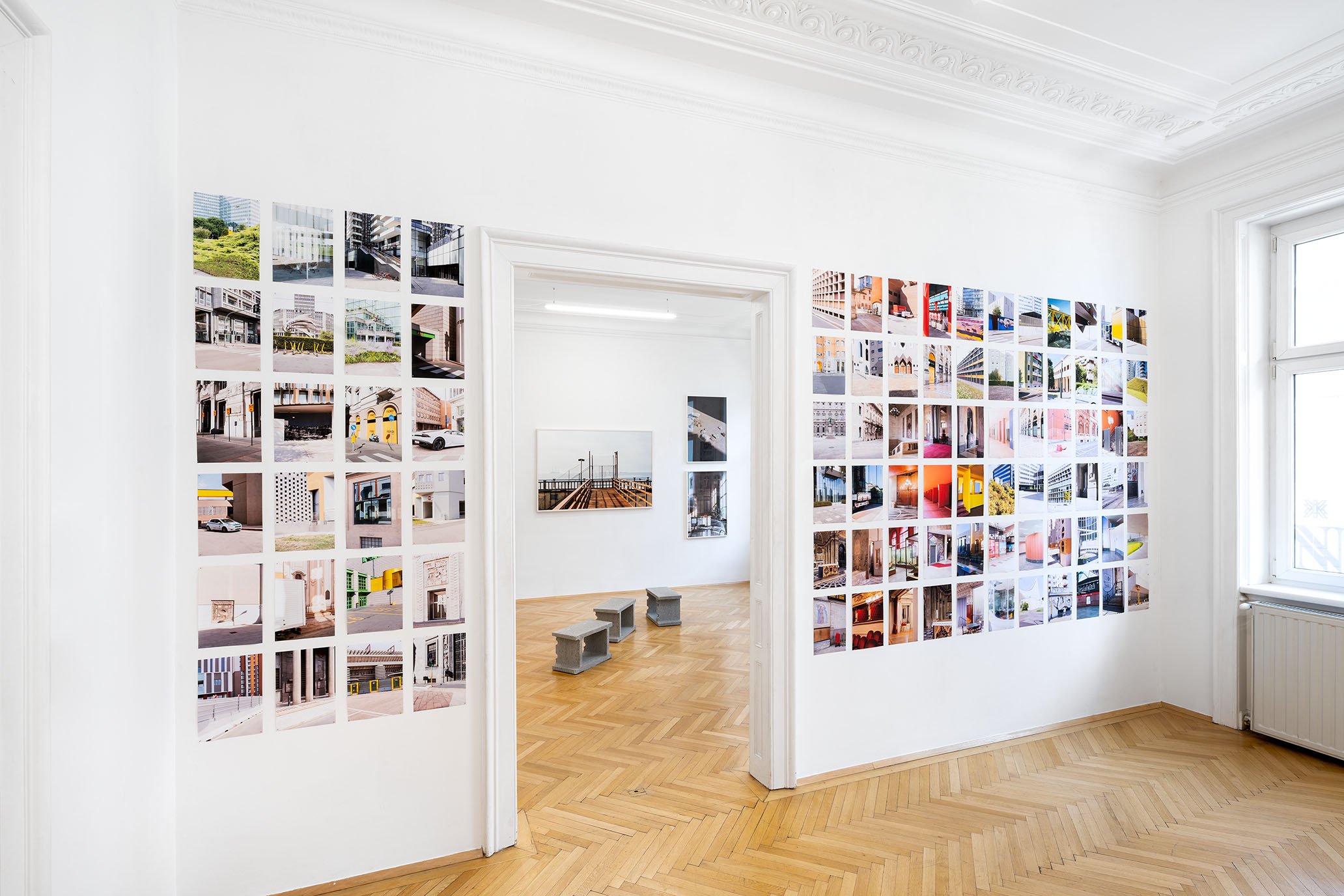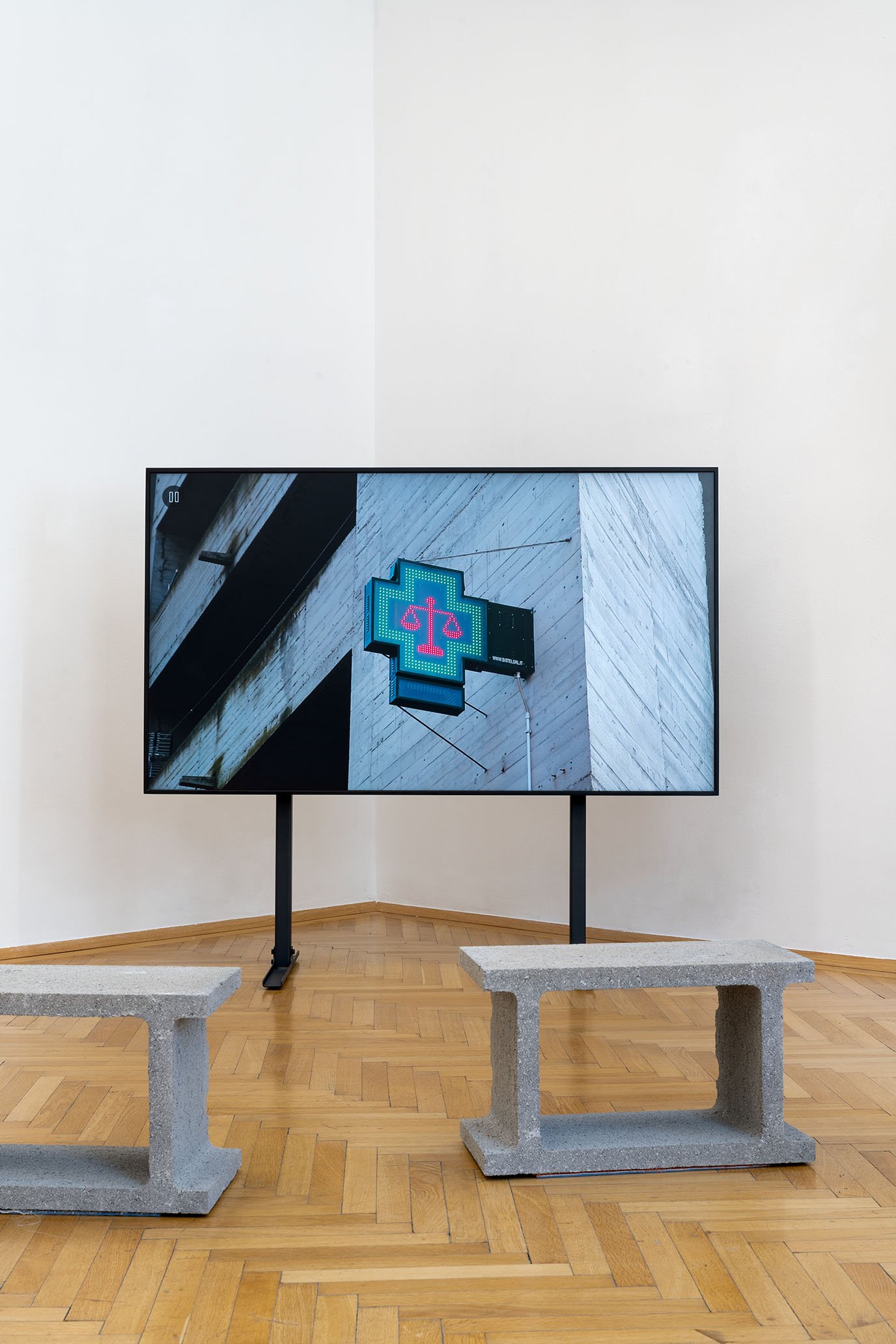A TALE OF TWO CITIES
Wolfgang Lehrner & Giovanna Silva
JUN 1 – JUL 8, 2023
Not everything that looks like photography is about photography per se. For the Austrian and Italian photographers, Wolfgang Lehrner and Giovanna Silva, the photo camera serves as a means to, and not as an end in itself. For about one decade they have each made use of the medium of digital photography to frame architectural details and specific sites that they encounter on their purposely conducted wanderings through different cities all over in the world. Lehrner’s body of work explores the city and seaport of Trieste, which belonged to the Austrian Habsburg Empire until the end of World War I and is now the capital of the autonomous region of Friuli Venezia Giulia. While his photography brings forth the universal characteristics of this urban space, Silva focuses on the historical transformation of the global metropole of Milan to tell a story about its architectural diversity.
The first room presents Giovanna Silva’s series Milan. City, I listen to your heart (2020-21). The large orderly arranged image wall comprises about 100 of the 1,000 images that she took daily in the early morning with her phone and camera over the course of one year under the conditions of the pandemic. The colourful images show architectural details of the in- and outdoors of popular public spaces – such as of the Cinema Teatro Manzoni, the public library, the Bocconi University, and Carlo Aymonino and Aldo Rossi’s Monte Amiata housing complex from the late 1960s with which they intended to improve the international architectural style of Le Corbusier’s approach to social inclusion. Similar to the transformation of the residential site from a low-income area into a place for the middle-class at the outskirts of the city, also the architecture of the core of the Italian city has transformed.
With the photo camera Silva directs our gaze towards the temporal changes in her home city and makes us aware of the metropole’s historical pastiche. The way in which the trained architect juxtaposes differences between postmodernist buildings and classical elements, and the colours used, reminds particularly of one of the comments Walter Benjamin makes on the concept of history. He emphasis that “history is the subject of a structure whose site is not homogenous, empty time, but time filled by the presence of the now [Jetztzeit].” As the city’s most recent urban transformations become visible through its juxtaposing architectural styles, Silva’s images invite us to see its historical ruptures.
The second room shows Wolfgang Lehrner’s photo series, City Without Qualities, whose title takes inspiration from Robert Musil’s modernist novel The Man Without Qualities. In contrast to Silva, Lehrner follows more a socio-politically motivated, rather than ontological approach to photographing what is materially left of the once Imperial city of Trieste. The past year he visited the city several times and took photographs of architectural details spread out across it. Many images show neutrally coloured concrete walls, as well as metal and stone elements. Lehrner’s aesthetic approach reflects his own national and critical distance, and generates an alienated feeling of the current condition of the once Imperial seaport city. His outsider viewpoint which, in turn, provides an inside into Trieste’s changing urban landscape and captures also how socio-political aspects and its international relations shape the public image of the city. For example, one of the two large images shows the world’s largest sailing yacht which has been located in front of the still very active seaport since the Italian police seized it due to its owner, the Russian oligarch Andrej Ogorewitsch Melnitschenko, being involved in EU sanctions related to Vladimir Putin’s war on the Ukraine.
In close proximity to the city’s modern harbour stands the Brutalist housing complex Rozzol Melara. Its architect Carlo Celli was, similar to Aldo Rossi’s Monte Amiata housing complex in Milan, also inspired by Le Corbusier’s work and executed the project in the mid-1960s to construct an affordable miniature city in Nord Italy. Lehrner’s 11-minute video (filmed with an iPhone partly installed on a tripod) walks us through the colourful corridors of the L-shaped building which connect the separate unities of the building. One particular moment reinforces how the architect’s design has formed ways of living together there. It shows the large and light community space which resembles a swimming pool, framed with benches and short stairways, and whose concrete walls have over time become decorated with the diverse graffiti images made by its occupants. The rattling background sound of the video relates to the fact that the many young people who initially moved in, because of the low costs, are still there. The disturbing noise comes from the shopping trolley that the aged residents use instead of proper walkers.
The site-specific engagement with the remaining material histories of both cities is held together by the artists’ experienced way of capturing otherwise subliminal motives. What connects their distinct photographic practices is the interrogation of the material ruptures between classical, modernist, and postmodernist elements in Italian architecture, as well as the shared interest in innovative social housing projects from the mid-twentieth-century. As Lehrner and Silva’s photographic engagements with the two urban environments approach a concept of history through their relationality, it is not surprising that they are preoccupied with the construction of visual narratives, which their images mediate photographically. And therein lies the artistic potential of today’s modernist photography.
Dr. Lisa Moravec
